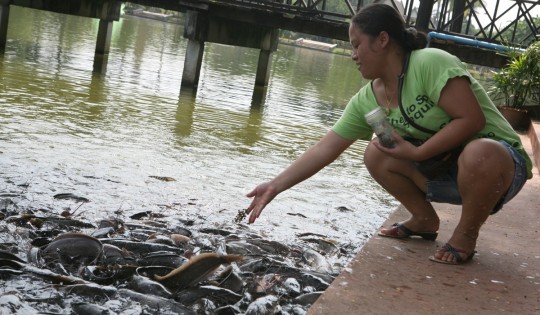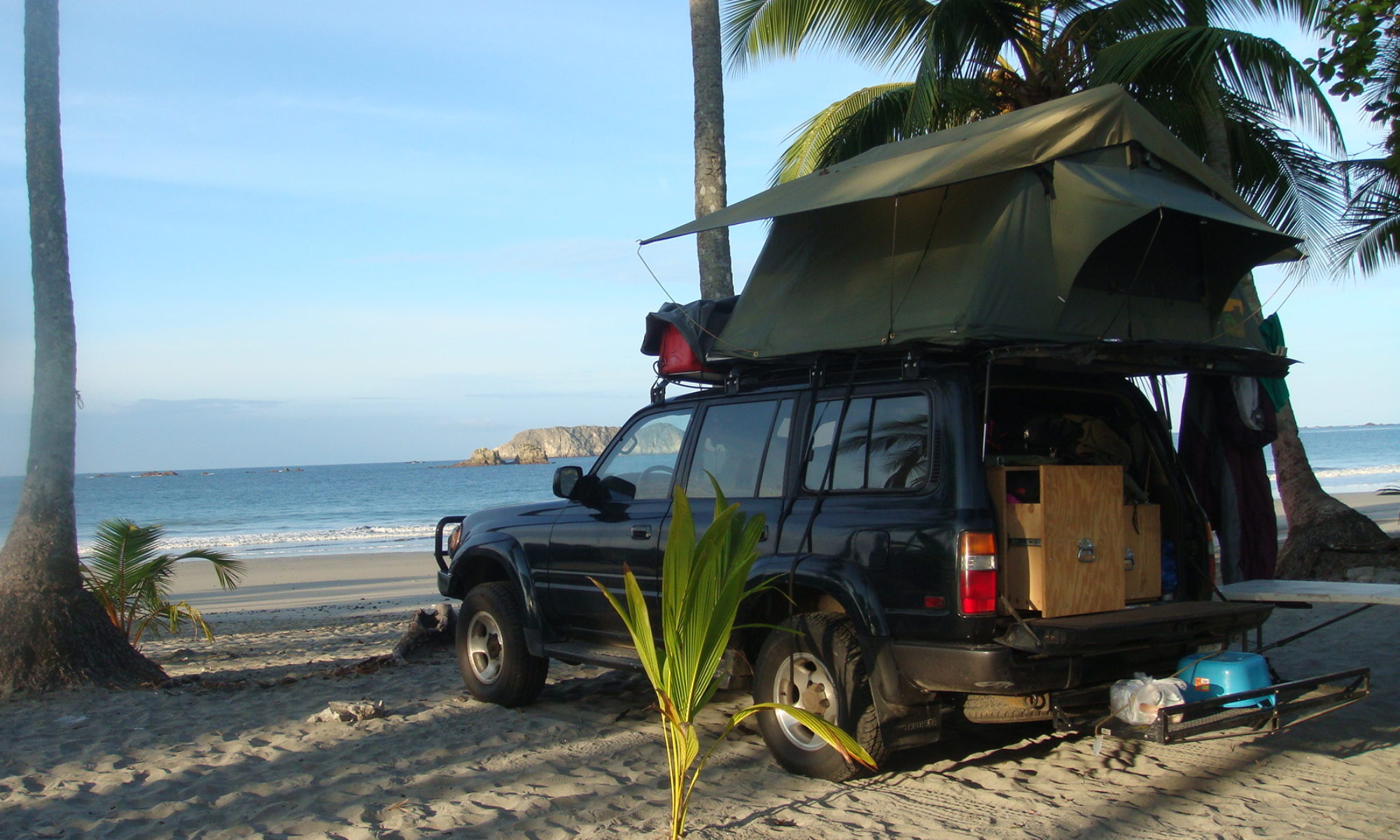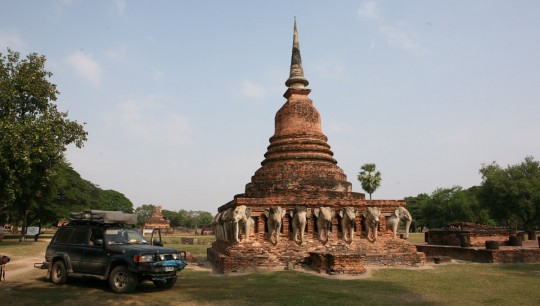
We leave Phnom Penh and go south-west toward the coast and the Bokor national Park. The hope is to camp up there. The roads are OK, but some portions are still under construction and we have to drive on gravels for long stretches.
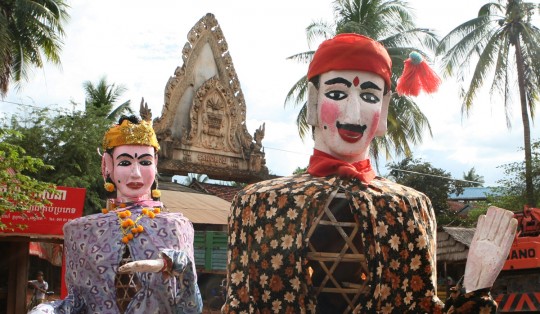
When we arrive at the entrance of the park, the authorities deny us entry, the road being unfinished. After repairing a puncture due to a sharp rock, we decide to find a place on the coast to stay for the night. We are welcomed by friendly inhabitants of Kep, only 25 miles to the Vietnam border.
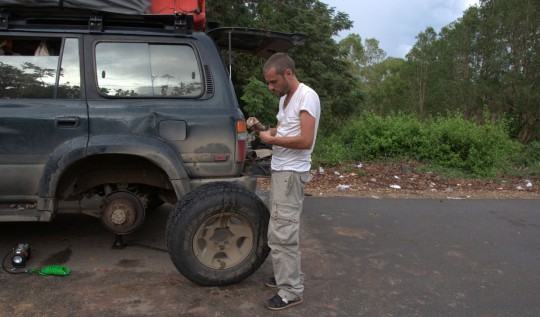
Vikas cook us some Thai food and we are able to eat before the rain comes. In the morning, we follow the coast due north-west which will eventually bring us back to Thailand in a few days.
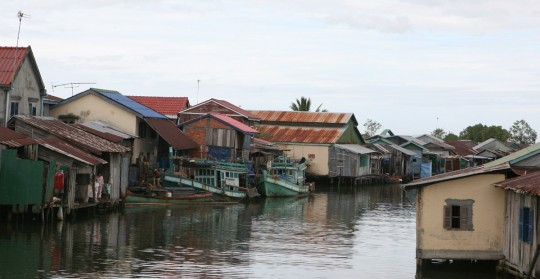
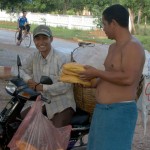
We make another stop in Sihanoukville where we spend the night in a guest house (Seabreeze Guest house, recommended). The landscape along the road is not as interesting as in the center of the country where we could witness the work of farmers. We try the local food several times during this trip, which is less spicy and sweeter than the Thai food but still quite interesting. One dish I enjoyed was the Loc Lac, stir fried cubed beef with red onions dipped in a sauce consisting of lime juice and black pepper.
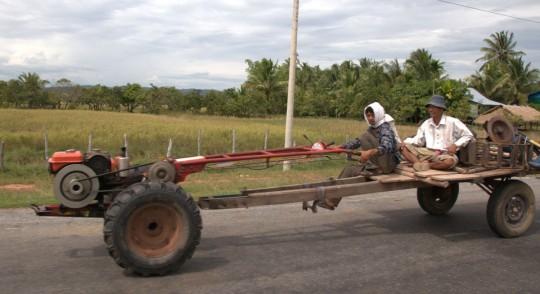
Finally, after crossing some low mountains, we are back at the border with Thailand. Everything goes smoothly there, and after one hour we are on the other side, trying to find a place to stay on the beach.
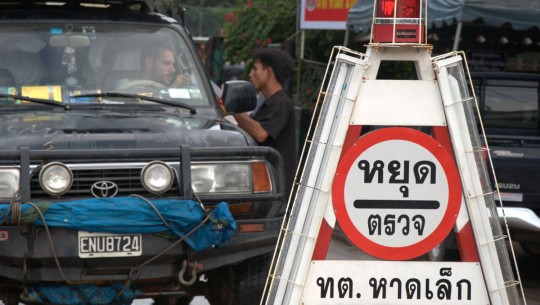
Somewhere around Laem Klat we find the perfect spot, and we take advantage of the few shacks dotting the beach to have food and enjoy a shower in the morning.
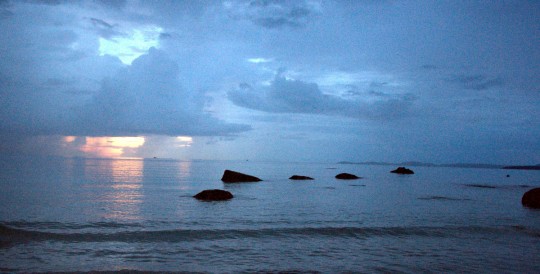
A long day of driving brings us back to Bangkok, and the following day Vikas is flying back to Mumbai. The routine continues for me, and I replenish my food reserves in the city. Later in the day, I go pick up Kathryn, who I used to work with in New York few years back. As Vikas, she will spend a week with me while I am travelling in northern Thailand. I go get her at the Bangkok airport, and leave immediately for Ayuthaya, a city one hundred kilometers north of Bangkok.
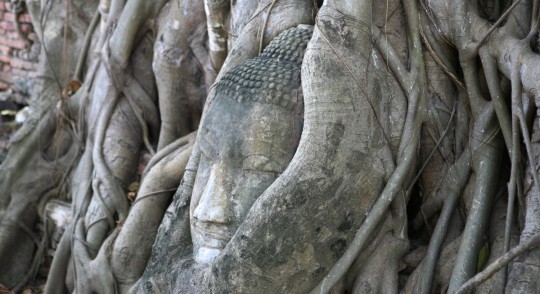
The former royal capital has many temples and palaces, and even if the place is quite popular among tourists, it does not feel overcrowded when you visit the many sites. The city grew around the ruins, so unlike Angkor Wat, the landscape you experience when walking from location to location is quite urban. The old city enclosing most of the ruins is an island located at the confluence of three rivers.
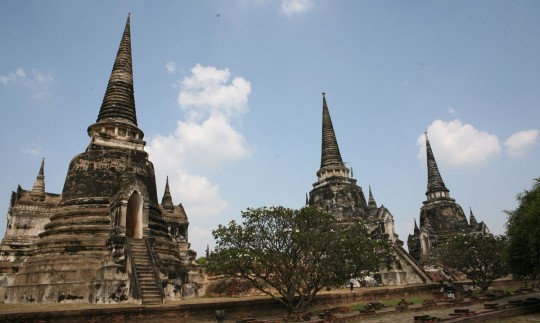
In the last few weeks, I saw a lot of Buddhas, but it was only the beginning, as I was about to discover. In a sanctuary hall, we discovered one of Thailand’s biggest bronze specimens, 56-feet high.
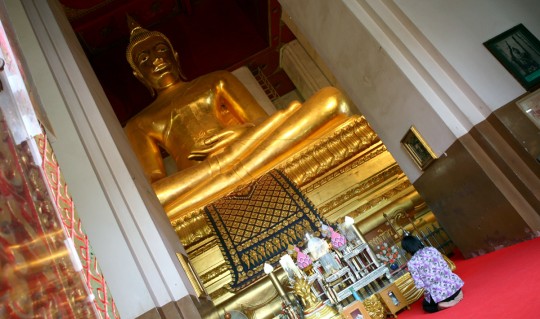
What is interesting about the hall housing the Buddha is that the Burmese government donated a huge amount of money in the ‘50s for its restoration. In fact, they were trying to repair the damage caused by the country army when the city was sacked 200 years earlier. Still, you don’t see such gesture frequently.
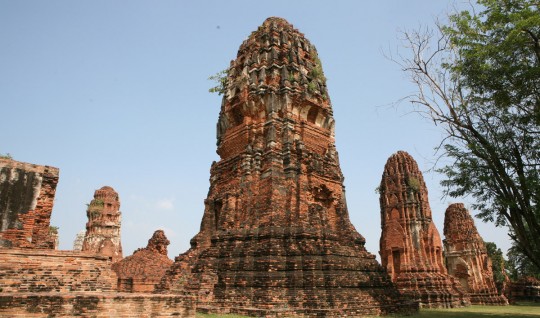
Also worth noticing is the Wat Phanan Choeng, a modern temple on the other side of the river. You take a small boat to get there, and can observe people feeding the fishes around the temple.
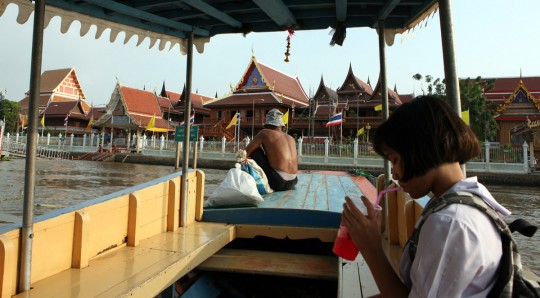
We stay two nights in town, on the front yard of the Baan Lotus guest house (US$6 a night, recommended). It is nice there, and there are showers. I am sure Kathryn appreciates the comfort…
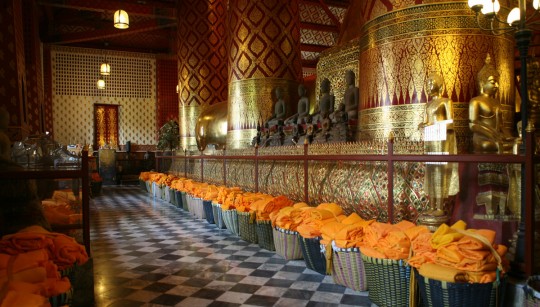
We leave the city and I have a long day of driving to reach Sukhothai, another ancient capital of Thailand.
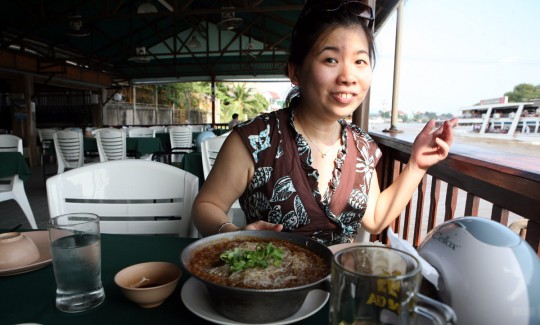
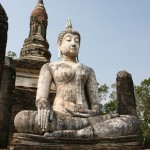
There, we arrive as night falls, and we are lucky enough to camp in the middle of the ruins. It is kind of cool to wake up in the middle of this park filled with old temples (Wat) and statues. An interesting detail differentiates the ruins I see here and the one in Angkor, Cambodia. Here, they used bricks almost everywhere, as in Angkor I remember the structures to be built out of sandstone. Also, Hindu temples in Angkor were altered to display images of the Buddha, but with a Hindu revival later on, Buddha imagery were destroyed. Eventually, Buddhism made its return in the 14th century…
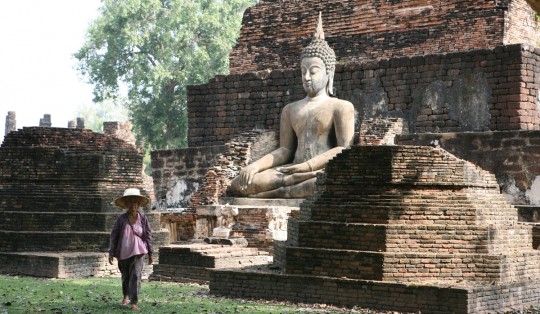
All of that is very nice, but we are ready to change thematic after seeing dozens of “Wats”. So we decide we will go in the Lang San natural park next, where we will be able to get a little bit of nature and a cold night. The park is only seventy kilometers from the Myanmar (Burma) border, so an incursion may be possible…
